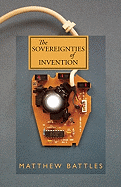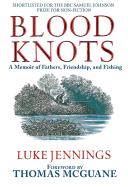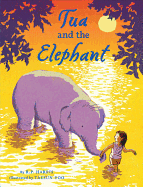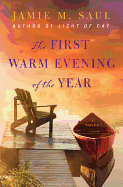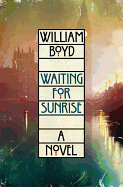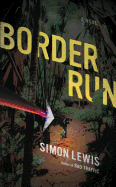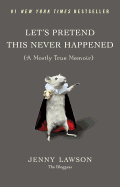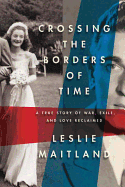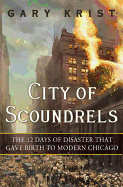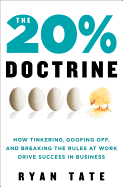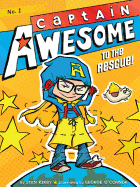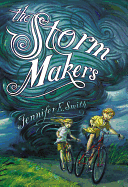Friday, April 27, 2012
Saturday I was part of a cash mob at Elliott Bay Books. This mob wasn't a screaming horde waving $20s around; they were decorous but intense, even Buddy the dog.
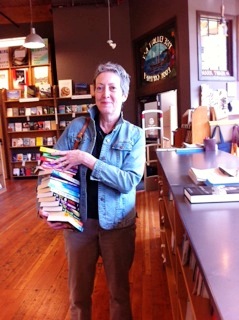 My mission was to fill in the gaps in my Robert B. Parker collection--I needed a total of 39 Spensers, 10 Jesse Stones and six Sunny Randalls, in order to reread them all. I purchased an armload stretching from my thigh to my shoulder. The impetus was twofold: I had just read and loved the pre-pub edition of Robert B. Parker's Lullaby by Ace Atkins (due out May 1), who is continuing the Spenser series, and I was finishing In Pursuit of Spenser, a festschrift in honor of the iconic Parker, who died in 2010. Edited by Otto Penzler, the collection delves into all things Spenser and Parker, with side trips for Parker's westerns (by Ed Gorman) and Jesse Stone series (Reed Farrel Coleman). Susan Silverman (S.J. Rozan), Hawk (Gary Phillips) and Boston (Dennis Lehane) also get their due.
My mission was to fill in the gaps in my Robert B. Parker collection--I needed a total of 39 Spensers, 10 Jesse Stones and six Sunny Randalls, in order to reread them all. I purchased an armload stretching from my thigh to my shoulder. The impetus was twofold: I had just read and loved the pre-pub edition of Robert B. Parker's Lullaby by Ace Atkins (due out May 1), who is continuing the Spenser series, and I was finishing In Pursuit of Spenser, a festschrift in honor of the iconic Parker, who died in 2010. Edited by Otto Penzler, the collection delves into all things Spenser and Parker, with side trips for Parker's westerns (by Ed Gorman) and Jesse Stone series (Reed Farrel Coleman). Susan Silverman (S.J. Rozan), Hawk (Gary Phillips) and Boston (Dennis Lehane) also get their due.
In Penzler's introduction, he says Parker saw Spenser as nothing less than heroic. He's a strong, macho man and an outspoken feminist who brooks no racism or homophobia; he's brave and loving; he's a smart aleck and a gourmet cook who craves Dunkin' Donuts; he loves good beer and a fine Champagne. In this exceptional private detective, we can see a straight line from Hammett to Chandler to Macdonald to Parker.
Ace Atkins recalls, in "Songs Spenser Taught Me," when he was a sophomore at Auburn University, "absolutely lost on all fronts." He picked up a used copy of The Godwulf Manuscript and found a mentor in Spenser, and in Parker. "Spenser first gave me the tools to be the sort of adult I wanted to be." Smart-aleck individualism, tolerance, classic jazz, living life well. Atkins notes that Spenser is all in the here and now, "a worldview that helps him enjoy life more than the rest of us." Reading Robert B. Parker is a major facet of a life well-lived. --Marilyn Dahl, reviews editor, Shelf Awareness
The First Warm Evening of the Year
by Jamie M. Saul
Forty-something Geoffrey Tremont thought he was settled in his life in New York City--he has friends, a successful career doing voice-over spots and a relationship with a woman who offers him companionship. But then Tremont is notified that he has been named the executor of a will for a college friend, Laura Wells, he hasn't seen in 20 years. He sets off to reconcile her estate in Shady Grove, a small town upstate, and his life is suddenly upended. He falls for Marian Ballantine, a dear friend of the departed--it's love at first sight, for a woman living in a perpetual state of mourning since her husband's death and stuck in a repressed relationship of her own.
In The First Warm Evening of the Year, Jamie M. Saul (Light of Day) has written an emotionally evocative novel about death (literal and figurative), the nature of grief, passion, self-knowledge and the complexities of love. Laura's passing assembles a cast of deeply drawn supporting characters forced to examine their intimate associations--or lack thereof. Sometimes people settle and use substitutes for cultivating more substantial relationships in their lives. But as one character remarks when considering the risks of love despite the consequences of heartbreak, "What's the point of having a heart, if you're not going to use it?" Those in this absorbing, beautifully written novel ultimately discover that sometimes love is not a choice, but rather a matter of having no choice. --Kathleen Gerard, blogger at Reading Between the Lines
Discover: A beautifully rendered, psychologically astute novel about the risks--and joys--of love and loving.
Waiting for Sunrise
by William Boyd
It is 1913 in Vienna, and Lysander Rief, a young English actor, has come seeking psychotherapy. He sees Dr. Bensimon, a student of Freud, and through the application of Bensimon's "Parallelism" technique, he is cured. Bensimon teaches Lysander that when something bad has caused us to become neurotic, we simply revisit that event and change the script. (Freud makes a cameo, in which he discredits Bensimon's theory--which Boyd has made up out of whole cloth.)
Lysander meets Hettie, a beautiful, enigmatic, high-strung sculptor, at Bensimon's office and begins an affair with her. She is living with an artist; when he finds out about Hettie's infidelity, she accuses Lysander of rape. The charge is taken seriously, Lysander is jailed and the real story begins.
Lysander is spirited out of jail and back to England by mysterious British diplomats who offer him an opportunity to repay his debt by engaging in espionage. The scenario appeals to his actorly persona, but the labyrinthine plot thickens considerably until Lysander does not know who is on which side. Hettie suddenly appears, telling him that he has a son and that she "forgives" him for leaving her. How she got to England, and what she's doing there, is another mystery.
In this mesmerizing book, Boyd (Any Human Heart; Brazzaville Beach) creates Vienna on the page--its look, sound, fashion, cuisine and ambience--then moves the reader seamlessly to England and the First World War. Waiting for Sunrise is a tour de force that keeps the reader guessing and enjoying the game. --Valerie Ryan, Cannon Beach Book Company, Ore.
Discover: A young British actor goes to Vienna for psychotherapy and ends up spying for England in a well-plotted, thoroughly entertaining tale.
The Sovereignties of Invention
by Matthew Battles
The comforting eyes of man's best friend turn to accusing harbingers of environmental apocalypse in "The Dogs in the Trees," the lead-off story in The Sovereignties of Invention, a disquieting collection of stories by Matthew Battles (Library: An Unquiet History) that evoke digital evolution and hauntingly portend the death of nature. Those dogs set a mood of unease that each subsequent tale stokes with exquisite prose and innovative "what ifs?" A purveyor of elegant dread à la Paul Bowles, Battles writes about isolated characters, information machines that become black holes and dirty, immortal unicorns. With an artisan's approach to language and inventive plots that nearly all end with a look into the abyss, Battles's dystopian stories are chillingly enticing.
Though a few stories sag a bit under their overambitious plots, Battles's best are clear-eyed brief fables of apprehension. Often the stories contain a magical device or happening brought on by the same desires for information and control that fuel our own rapid technological advances; then the "magic" reveals its destructive nature. In "Camera Lucida," a family discovers a camera in their seaside cottage that takes pictures from other, mysterious places. In "Time Capsules," the hero finds that magical pills that buy time cost something else more dearly.
Battles, a program fellow at Harvard's Berkman Center for Internet and Society, has clearly thought through the rapid way humans are disconnecting from the natural world. His bitingly clever stories offer a glimpse into that dystopia that lingers long after the reading. --Cherie Ann Parker, freelance journalist and book critic
Discover: A disquieting, yet enticing, collection of exquisite stories that analogize the digital evolution.
Mystery & Thriller
Border Run
by Simon Lewis
In his second novel, Border Run, Simon Lewis takes us to Southeast Asia, where backpackers Will and Jake follow a local tour guide deep into the jungle in hopes of meeting and seducing the legendary tribeswomen there. When they arrive at an idyllic waterfall, it seems as though their dreams have come true; two young women entice them into the water, and their adventures in paradise begin.
Or so they think. Will and Jake quickly learn that their overly accommodating tour guide has his own agenda, and the two young men find themselves drawn into a world of smuggling against their will. In a country they do not know and with no allies to speak of, they struggle to maintain calm as things spiral out of control, but quickly find themselves in an increasingly dangerous web of lies, deceit and even murder. With their lives on the line, the bonds of friendship and their very moral fortitude are put to the test.
Border Run is a captivating novel of travel plans gone very, very wrong, but it is also more than that; within its short and action-packed framework, Lewis manages to raise important questions about human nature. How will we respond when things do not go as planned? How do we behave when we think no one is watching? What we can be driven to do in desperate situations? The combination works: Border Run is a gripping, fast-paced novel that will pull readers in from start to finish. --Kerry McHugh, blogger at Entomology of a Bookworm
Discover: A fast-paced novel of travels in Southeast Asia gone wrong--and how two travelers cope.
Science Fiction & Fantasy
Blackbirds
by Chuck Wendig
Miriam Black, the protagonist of Blackbirds, has the Dead Zone-ish ability to see a person's future when she touches him or her, but Chuck Wendig takes it one step further by having her foresee only how and when the person dies. She becomes a grifter, paying visits to people she knows will kick the bucket and then taking their money so she can pay for food and shelter until her next target dies. Things get complicated when she runs into Ashley, a punk who wants in on her game, and meets Louis, a kindhearted truck driver whom she sees murdered in the near future while he utters her name. Does she somehow bring about his murder? And how can she stop it when the last time she tried preventing one of her visions, she ended up causing the death?
Wendig's dark and twisty adventure is filled with misfit characters who defy easy stereotypes. Miriam is self-destructive, but she's doing the best she can to survive the difficult hand life has dealt her. Louis, big as Frankenstein, shows Miriam more sweetness than she's ever experienced. Stone-cold killer Harriet has a scene that makes readers understand her first kill; her story is even funny the first time it's told.
Wendig inserts surprising moments of humanity among all the profanity. There's a tale of a little boy and his balloon that should crack readers' hearts. And despite fate being hell-bent on keeping her down, Miriam's stubborn struggle to change it makes Blackbirds take flight. --Elyse Dinh-McCrilllis, freelance writer/editor, blogging at Pop Culture Nerd
Discover: A young psychic tries to cheat death in a dark, twisty adventure with as much humanity as profanity.
Biography & Memoir
Let's Pretend This Never Happened (A Mostly True Memoir)
by Jenny Lawson
With Let's Pretend This Never Happened, Jenny Lawson expands on the persona she's honed on her popular website The Bloggess while crafting a narrative that's entirely accessible to new readers, with a flair for exaggeration for comic effect that will induce laughing and cringing in equal measure. While some of the material in the book may be familiar to Lawson's online readers--such as "And That's Why You Should Learn to Pick Your Battles," the story of her purchase of a giant sheet-metal chicken--much of it consists of stories she hasn't shared before. Readers will learn about Lawson's rural West Texas childhood, with her dad's taxidermy shop in the back yard; how she met and married the famously long-suffering Victor; her rather unlikely career in human resources with a faith-based organization; and her ultimate decision that her daughter deserved a crazy country childhood, too... complete with taxidermied animals.
Lawson has written openly and honestly on her blog about her nearly-crippling social anxiety and sense of inappropriateness. In Let's Pretend This Never Happened, she elaborates on the ways that the Internet has helped her deal with that; the chapter "Making Friends with Girls" is certain to connect with her core audience, but will resonate with anyone who's struggled with fitting in (which means just about everyone). This condition probably means that Lawson would never have had a career in stand-up comedy, but the stage's loss is the literary world's gain. --Florinda Pendley Vasquez, blogger at The 3 R's Blog: Reading, 'Riting, and Randomness
Discover: How taxidermy and rural West Texas helped Jenny Lawson become a popular Internet personality.
Blood Knots: A Memoir of Fathers, Friendship, and Fishing
by Luke Jennings
British novelist and drama critic Luke Jennings's lovely and sensitive memoir, Blood Knots, opens at King's Cross, the train station made famous in the Harry Potter books as the home of the Hogwarts Express. A canal nearby is a popular spot to fish for pike. But Jennings moves a bit further down to try another spot, one of the many inland canals and rivers in London frequented by fly fishermen--in this case, a "morbid geography" with "dark water, its surface the faint sodium orange of the sky."
Jennings has been fishing ever since his dad bought him his first rod and reel. His father was severely burned in a tank battle and was a member of the Guinea Pig Club, which pioneered new plastic surgery treatments. Although his dad didn't fish, he encouraged his son every chance he got. It was Jennings's good friend Robert Nairac, from their school, Ampleforth, who ably instructed him in angling and falconry. An intelligence officer in the army, Nairac was captured in 1977 by the IRA in Northern Ireland and executed. These two heroes quietly guide Jennings in his life and in his love for fishing where, in those quiet moments, "the line begins, inch by inch, to tick from my hand. Deep down, something is moving, and I know that this is the moment, this is why we do it."
As Tom McGuane writes in his marvelous foreword, Blood Knots is a "great book" with "sharp portraiture" and "astute comments on angling literature, and elegant, dry humor." Cracking good. --Tom Lavoie, former publisher
Discover: A moving and delightful inquiry into love, friends and the mysterious world of angling.
Crossing the Borders of Time
by Leslie Maitland
Crossing the Borders of Time is as gripping as any fiction. Janine Gunzburger Maitland's escape from Germany to France during Hitler's rise to power, her family's eleventh-hour escape on a refugee ship and their acclimation to America is woven with another story--the sorrow at leaving her fiancé behind, and the life-long hope of seeing him again. Former New York Times investigative reporter Leslie Maitland grew up hearing her grandparents' and her mother's stories about their lives in Alsace, their flight from the Nazis, and the struggle to gain entry to the U.S. Her grandfather saved forms, papers and photos of lost relatives, which Maitland uses to illustrate the book, underscoring the sadness of changed names and addresses as her ancestors sought safety.
Maitland always listened to Janine's stories about Roland, the love of her life; despite their pledge of undying love, she never heard from him again. As Maitland researched the family history during a "reconciliation" trip to Germany with her parents, she determined to find closure for her mother. The meticulously researched history underscores one family's saga of persecution and survival, while the tale of Janine and Roland adds a very personal theme. Readers hoping for a happy ending will be rewarded by a conclusion any novelist would have been happy to create. --Cheryl Krocker McKeon, bookseller
Discover: A gripping true-life tale of victims of Nazi persecution and one survivor's quest for her lost love.
History
City of Scoundrels: The 12 Days of Disaster That Gave Birth to Modern Chicago
by Gary Krist
On July 19, 1919, a blimp burst into flames and fell from the skies over Chicago, destroying a bank. Three days later, a young girl was sensationally murdered and a transit strike began that would cripple the city for days. But these three stories paled before the violent race riots that broke out July 27 when white bathers threw rocks at black swimmers nearing "their" beach, killing a black teenager. The violence rapidly escalated, and in the next week hundreds of people of both races were killed or injured.
Facing down all these calamities was mayor William "Big Bill" Thompson. A cowboy who had turned to politics, Thompson was a controversial, larger-than-life character. Newspapers accused him of graft and corruption, but the working class loved him. Both sides agreed that he had surprising political savvy, and he proved it by holding Chicago together during these crises and then transforming it into the city it is today.
Although Gary Krist's City of Scoundrels is nonfiction, it reads like a novel, with an hour-by-hour accounting of how each disaster unfolded. Krist ably bares the complicated, corrupt politics of Illinois, showing how city and state officials scrambled to deal with each problem and turn it to their own political advantage. Set against the backdrop of Prohibition, the ending of World War I and the great influenza epidemic, City of Scoundrels gives a vivid glimpse at 12 horrifying days in an already difficult era. The lives of Chicagoans, both famous and not, would never be the same again. --Jessica Howard, blogger at Quirky Bookworm
Discover: Twelve disastrous days in 1919 that changed the course of Chicago's history.
Business & Economics
The 20% Doctrine
by Ryan Tate
The subtitle of Ryan Tate's The 20% Doctrine--How Tinkering, Goofing Off, and Breaking the Rules at Work Drive Success in Business--may induce some head scratching: How could goofing off be good for business, let alone great? It all comes back to the main title, which refers to policies at some companies that encourage employees to devote one-fifth of their work time to projects that personally interest them, perhaps developing ideas that could become the next iPad. It was an approach famously pioneered by Google--and led to the development of Gmail and AdSense, which became billion-dollar cash cows. For innovators like Steve Jobs, restaurateur Thomas Kellar and educator Joan Sullivan, this kind of approach has proved essential.
The 20% Doctrine sings the praises of six men and women who have embraced rebelliousness and unorthodox practices as a means to cultivate innovation. Tate's story starts at Google, then moves on to other examples. The citizen journalists covering the 2008 election in "Off the Bus" for the Huffington Post was another 20% project, one that wound up breaking major news stories like Obama's "Bittergate" moment, while projects like Yahoo's "Hack Day" took 20% time to further extremes.
Tate, a tech gossip blogger for Gawker.com and an advocate of his book's eponymous doctrine, approaches each individual or company he covers with an admirer's devotion. The 20% Doctrine reads like a simple how-to summary, where hypotheses can be amended to incorporate newfound bits of wisdom. The steps that Tate lays down should provide a sound basis for those aspiring to become future 20-percenters themselves. --Nancy Powell, freelance writer
Discover: A new way of thinking to spur creativity and innovation within the work environment.
Children's & Young Adult
Tua and the Elephant
by R.P. Harris, illus. by Taeeun Yoo
With this enchanting first novel, R.P. Harris plunges readers into Chiang Mai, Thailand, as seen through the eyes of 10-year-old Tua (Thai for "peanut").
Chiang Mai might be a town bustling with crowds of farangs ("creature[s] from a foreign land"), buses and taxis, but Tua knows everyone in the night market by name, and they in turn look after their "little peanut." One night, Tua finds an elephant just outside the night market and feels an instant connection. She senses that it's unhappy, and follows the elephant. She discovers that its mahouts, the people who are meant to take care of it, are in fact mistreating the animal. She hatches a plan to free the elephant, but what then?
Harris invents a resourceful, intelligent heroine who chooses her allies well, and introduces readers to a tight community that aids Tua in her mission but never takes it over. The author gently raises the plight of Asian elephants, which are often taken from the wild to be exploited for profit. But the bond between Tua and the elephant drives the action. Taeeun Yoo (The Little Red Fish), in her gold and purple illustrations, is as adept at scenes of the marketplace as she is at conveying the intimate connection between Tua and her newfound four-legged friend.
The plentiful artwork, generous white space and short chapters will invite budding readers, and the sprinkling of Thai words make this a strong read-aloud choice. --Jennifer M. Brown, children's editor, Shelf Awareness
Discover: An enchanting novel about a resourceful 10-year-old, the abused elephant she rescues, and a tightly knit community in Thailand.
Captain Awesome to the Rescue!
by Stan Kirby, illus. by George O'Connor
With its combination of comic book–style illustrations and chapter book format, Captain Awesome is sure to attract a following.
Eight-year-old Eugene McGillicudy has just moved to Sunnyview for his father's new job. He will have to start at a new school and make new friends. But is he afraid? No, he's not! Because he is also the superhero known as Captain Awesome! Author Stan Kirby (a pseudonym that pays homage to Marvel creators Stan Lee and Jack Kirby) takes problems any child will recognize and shows how Captain Awesome tackles them one at a time. He protects his army of action figures and comic books from Queen Stinkypants (aka his baby sister, Molly). And just when Eugene suspects his teacher Ms. Beasley (aka Ms. Beastly) is a "brain-sucker" (how else could she know his name is Eugene McGillicudy?), she lets him take charge of Turbo, the class hamster. But that only invites the wrath of pink-beribboned Meredith Mooney.
George O'Connor opens each chapter with an illustration in Eugene's hand, then peppers the pages with images of scenes from home and school. Eugene's superhero fantasies appear in comics-style graphics; type treatments play up Captain Awesome's signature cry, "MI-TEE!," as well as standbys such as "Bam!" "Pow!" and "Whap!"
Luckily, Eugene discovers Charlie Thomas Jones, a fellow Super Dude comics collector. Together they solve the mystery of Turbo's whereabouts when he goes missing at school. Charlie's secret superpower identity is explored further in Captain Awesome vs. Nacho Cheese Man. Just the ticket for fans of Captain Underpants. --Jennifer M. Brown, children's editor, Shelf Awareness
Discover: An action-packed hybrid of comics and early chapter books sure to win over fans of Captain Underpants.
The Storm Makers
by Jennifer E. Smith, illus. by Brett Helquist
In her middle grade debut, Jennifer E. Smith (The Statistical Probability of Love at First Sight) skillfully pairs magic and science to create a whirlwind adventure, both entertaining and educational.
The drought at the new McDuff family farm in Wisconsin has been brutal this summer, and when 12-year-old Ruby finds a stranger, Otis Gray, in her barn, he lists the symptoms that match her twin brother Simon's fever, which seem to be connected to the shifting storm. Ruby learns that Simon is a Storm Maker, "one of a very small group of people in the world who have the ability to influence the weather." Also, Simon is the youngest Storm Maker in history, which can potentially make him the deadliest if he's not stabilized, and Ruby's charged with the task. When Otis goes missing and Rupert London, the chairman of MOSS (Makers of Storms Society), appears on the scene, the suspense accelerates, with many twists and turns.
Narrator Ruby may be the powerless sister to the prodigy brother, yet the story remains fascinating despite her lack of ability to control storms, because she's the levelheaded of the two and shows that being ordinary can prove to be extraordinary. With more than 10 illustrations by Brett Helquist (A Series of Unfortunate Events; Chasing Vermeer) that are loyal to Smith's prose, there's instant appeal to reluctant readers. Recommended especially for fans of Ingrid Law's Savvy, The Storm Makers is a fun trip for boys and girls. --Adam Silvera, assistant coordinator, Books of Wonder, New York
Discover: A whirlwind adventure with twin 12-year olds (one powerful, the other not) fighting against a rogue Storm Maker.
| Advertisement Meet belle bear! |


